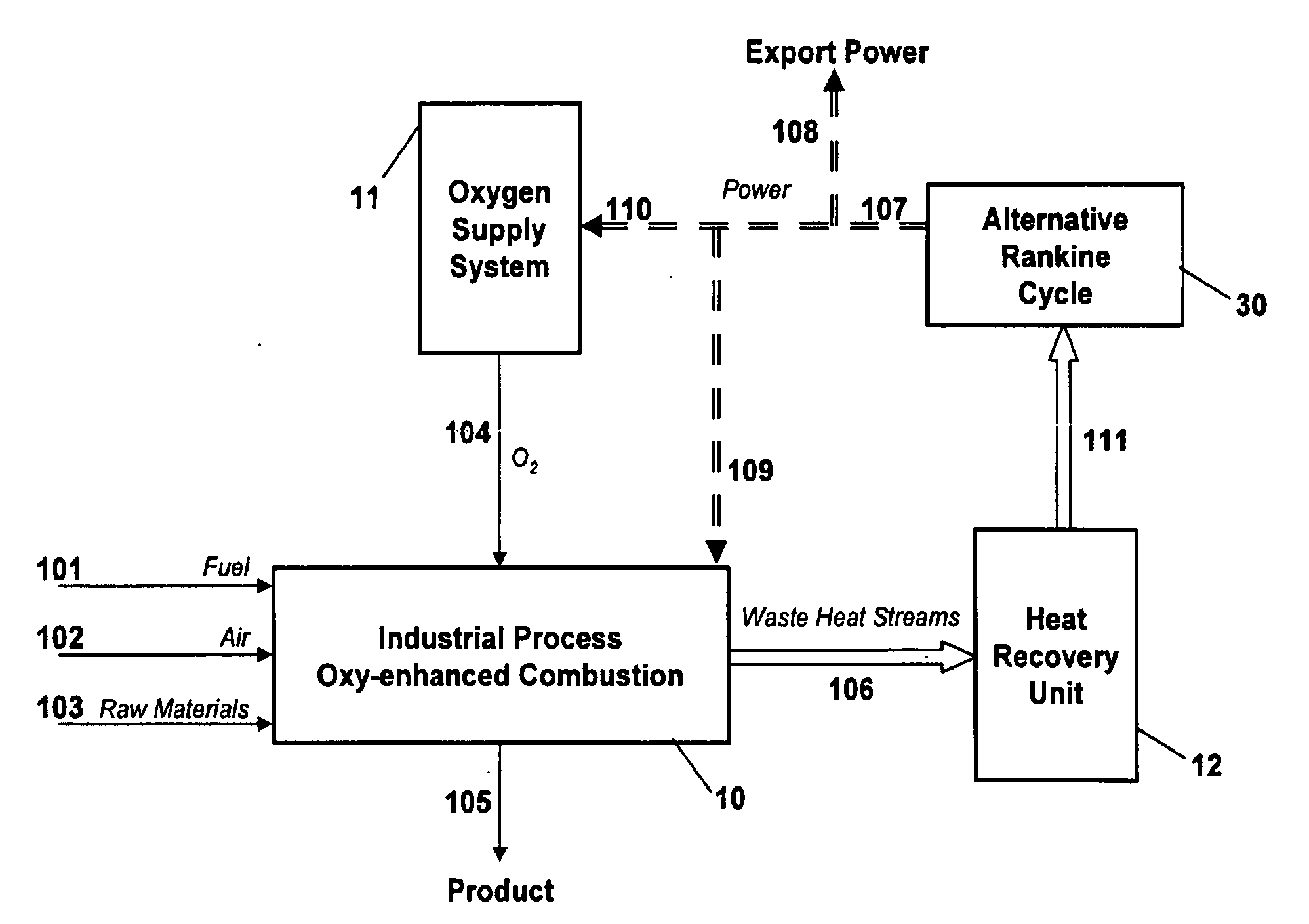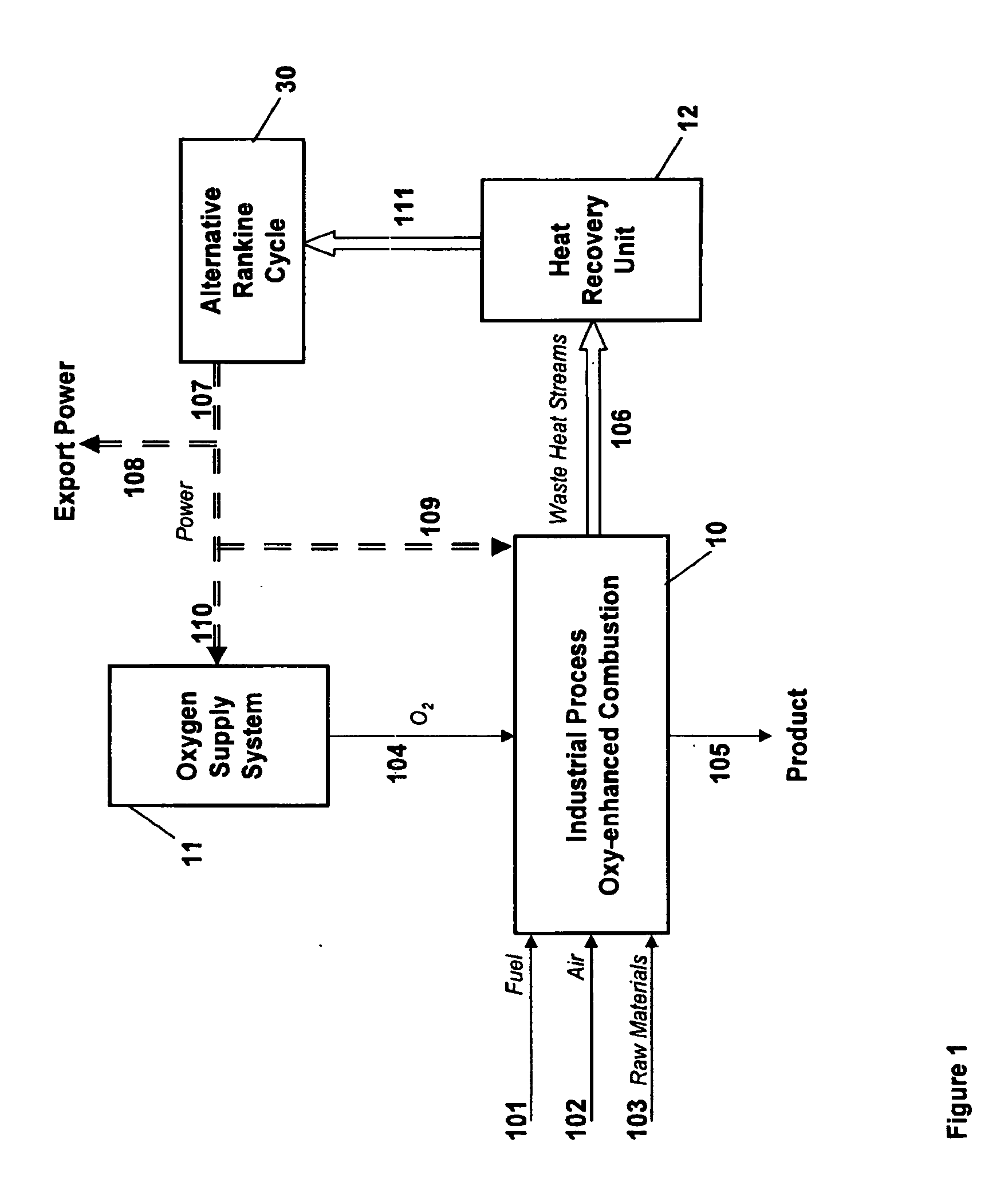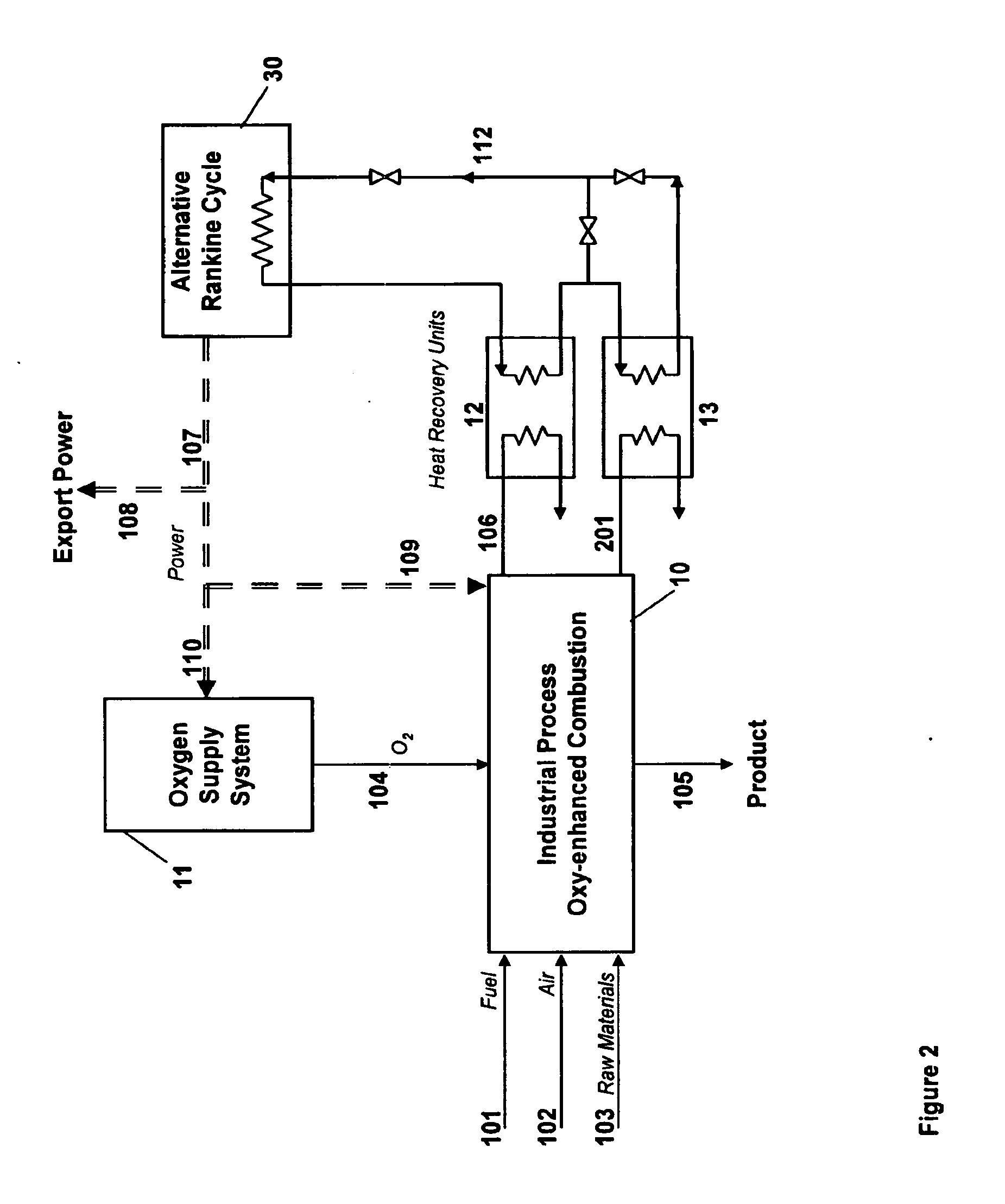Oxygen enhanced combustion in industrial processes
a technology of industrial processes and oxygen, applied in the direction of steam generation using hot heat carriers, machines/engines, lighting and heating apparatus, etc., can solve the problems of reducing the net demand of electricity of the oxygen supply system, less efficient steam power generation systems, etc., to reduce equipment costs, less efficient, and flexible operation
- Summary
- Abstract
- Description
- Claims
- Application Information
AI Technical Summary
Benefits of technology
Problems solved by technology
Method used
Image
Examples
example 1
[0038]Benchmark: An optimized air fueled cement plant has the following throughput and fuel consumption:
Plant Capacity:4000tpdFuel Consumption:131.7MWOxygen consumption:0.0kg / h
[0039]The heat sources from kiln and clinker cooler are given in Table 1, if no heat is recovered from these streams, the total exhausted heat amounts to 23.5% of the fuel consumed (calorific input).
TABLE 1Air fuel combustion without heat recoveryKilnClinker CoolerStreamExhaustExhaustFlow rate, kg / h274 000172 400Temperature ° C.332169Composition, % vol.N258.079.0O22.021.0CO234.20.0H2O5.80.0Heat Flow*, MW24.46.6Exhausted heat as %18.535.0Fuel Calorific Input*calculated for a temperature discharged of 35° C.
[0040]Moreover, low temperature of the hot air exiting the clinker cooler of 169° C. makes heat recovery using alternative Rankine cycle less feasible. Only the heat from flue gases is recoverable. Table 2 shows the amount of recoverable heat from each stream, the power generated considering an overall effici...
example 2
Partial Oxygen Enhanced Combustion
[0041]An increase by 25% in cement plant throughput can be achieved by increasing the fuel input and at the same time using about 47.5% of the oxygen required for combustion as pure oxygen, stream 104 as shown in FIG. 4.
Plant Capacity:5000tpdFuel Consumption, 101:191.7MWInput Oxygen, 104:28,460kg / h
[0042]The heat streams 106, 201 generated in this case are given in Table 3.
TABLE 3Oxygen enhanced combustion without heat recoveryExhaust kilnExhaust ClinkerStream(201)Cooler (106)Flow rate, kg / h287,000317,300Temperature ° C.332403Composition, % vol.N245.379.0O22.021.0CO244.70.0H2O8.00.0Heat Flow*, MW24.741.8Exhausted heat as %12.921.8Fuel Calorific Input*calculated for a temperature discharged of 35° C.
[0043]Table 4 shows the amount of recoverable heat from each stream, the power generated considering an overall efficiency of 18%, and recalculates the exhausted heat related to fuel consumption.
TABLE 4Oxygen enhanced combustion with heat recoveryExhaust k...
example 3
100% Oxygen Enhanced Combustion with Flue Gas Recirculation
[0044](a): No heat recovery through power generation.
[0045]A similar increase in throughput, by 25%, can be obtained switching to 100% oxygen enhanced combustion, and partial recirculation of the flue gases, to account for oxygen dilution as shown in FIG. 6, where no heat recovery is utilized.
Plant Capacity:5000tpdFuel Consumption, 101:184.7MWInput Oxygen, 104:60,000kg / h
[0046]The heat streams 106 and 201, 202 and 203, generated in this case are given in Table 5.
TABLE 5Complete oxyfuel conversion without heat recoveryExhaustExhaustClinkerkilnRecirculatedVentedCoolerStream(201)(202)(203)(106)Flow rate, kg / h331,600126,100205,500275,900Temperature ° C.332523Composition, % vol.N23.779.0O22.021.0CO281.60.0H2O12.80.0Heat Flow*, MW36.3—22.539.8Exhausted heat as %——1221.5Fuel Calorific Input*calculated for a temperature discharged of 35° C.
[0047](b): Heat recovery through power generation.
[0048]Table 6 summarizes the flow rate, tempe...
PUM
 Login to View More
Login to View More Abstract
Description
Claims
Application Information
 Login to View More
Login to View More - R&D
- Intellectual Property
- Life Sciences
- Materials
- Tech Scout
- Unparalleled Data Quality
- Higher Quality Content
- 60% Fewer Hallucinations
Browse by: Latest US Patents, China's latest patents, Technical Efficacy Thesaurus, Application Domain, Technology Topic, Popular Technical Reports.
© 2025 PatSnap. All rights reserved.Legal|Privacy policy|Modern Slavery Act Transparency Statement|Sitemap|About US| Contact US: help@patsnap.com



